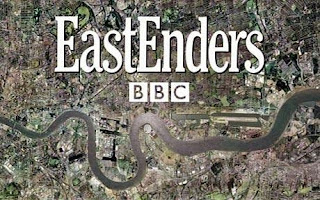The age range of the characters in the show varies, often showing families, but it focuses mostly on the teenagers and adults and their lives. In the episode I watched, the representation of teenagers was rather stereotypical. The episode showed how a particular female teenager’s relationship with her mother, regarding a trip her mother had set up for her after completing exams. The girl argued with her and then conflict then occurred with her boyfriend, too, showing the different relationships teenagers have with people around them. This makes the character’s life relatable to the audience, as teenagers fall under the target audience for Eastenders. The adult’s relationships with the teenagers are also shown stereotypically- at one point, the mother has a very ‘heart-to-heart’ chat with her daughter and gives her advice on life choices, saying “If you stay round here you’ll end up just like me.” This gives verisimilitude as parents often have to guide their teenagers with problems, which also makes the characters relatable.
The conventions of gender within Eastenders are also shown stereotypically, particularly in the episode I watched. The main female characters in the episode were often shown inside a beauty salon- mise-en-scene used to show that they are feminine. These characters also wore makeup and feminine clothing, and they talked about wedding arrangements and beauty. This eventually led to an argument, in which the females acted emotional, which is another stereotypical trait. Other female characters in the episode also argued between themselves over a man, which is also stereotypical but relatable as it shows how there can be conflict between characters. On the other hand, males were shown as being serious even when in a particularly stressful situation, such as the teenage boy who got into a fight with his girlfriend. They were also shown to have stereotypical masculine interests, such as football and sport.
It could be argued that the ethnicity of characters within that episode doesn’t necessarily reflect the reality of ethnic diversity within that pat of London, as in the episode I watched there were very few ethnic minorities shown- although they were still there. With regards to class, the working class area was represented through locations shown such as a shop and the pub, as well as a character who was trying to earn money from lottery tickets. She was also represented as working class through her desperation to get a job. Even with the younger characters, class is shown, such as when the teenage girl says, “How many GCSEs have you got?” which is also a use of verisimilitude.
This information is gained from watching an episode of Eastenders. This information will help me in the creation of my soap opera pieces as it enables me to know more about soap opera conventions and also allows me to compare my own soap to real ones when creating it. It also gives me information into the typical target audiences for specific soap operas and will assist me in working out the target audience for my own soap pieces.


No comments:
Post a Comment